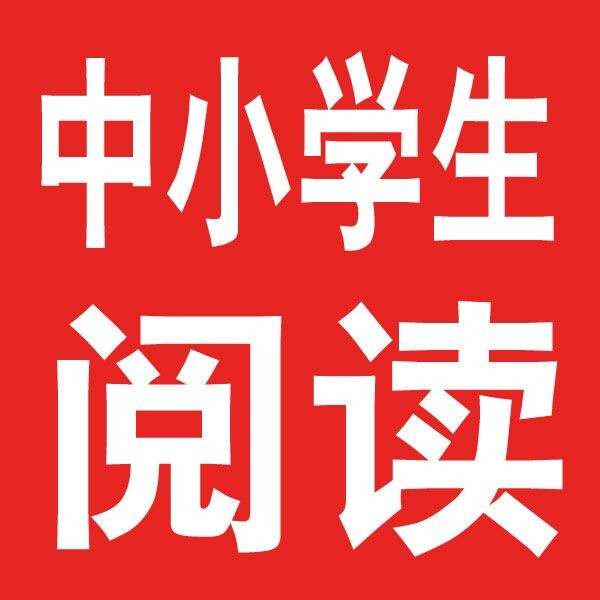点上方 ↑“ 中 小学生阅读” 关注更多资讯 !
●阅读应当成为吸引学生爱好的最重要的发源地。我的教育信念的真理之一,便是无比相信书的教育力量。——苏霍姆林斯基
形容词/副词的比较级和最高级
1. 形容词/副词的比较级和最高级的构成规则
(1)单音节词和少数以-er,-ow结尾的双音节单词,比较级在后面加-er,最高级在后面加-est。
① 单音节单词:
small→smaller→smallest
short→shorter→shortest
tall→taller→tallest
great→greater→greatest
② 少数以-er,-ow结尾的双音节单词:
clever→cleverer→cleverest
narrow→narrower→narrowest
(2)以不发音e结尾的单音节单词,比较级在原形后加-r,最高级在原级后加-st。
large→larger→largest
nice→nicer→nicest
able→abler→ablest
(3)以一个辅音字母结尾的闭音节(即:辅音+元音+辅音)单词中,先双写末尾的辅音字母,比较级加-er,最高级加-est。
big→bigger→biggest
hot→hotter→hottest
fat→fatter→fattest
(4)以“辅音字母+y”结尾的双音节词, 把y改为i,比较级加-er,最高级加-est。
easy→easier→easiest
heavy→heavier→heaviest
busy→busier→busiest
happy→happier→happiest
(5)其他双音节词和多音节词,比较级在前面加more,最高级在前面加most。
beautiful→more beautiful→most beautiful
different→more different→most different
easily→more easily→most easily
(6)有少数形容词、副词的比较级和最高级是不规则的,必须熟记。
good→better→best
well→better→best
bad→worse→worst
ill→worse→worst
old→older/elder→oldest/eldest
many/much→more→most
little→less→least
far →further/farther→ furthest/farthest
2. 形容词和副词比较级的用法
(1)“甲+be+(倍数)+形容词比较级+than+乙”表示“甲比乙…”或“甲比乙…几倍”。
Tom is taller than Kate.
汤姆比凯特高。
This room is three times bigger than that>这个房间比那个大三倍。
(2)“甲+实意动词+(倍数)+副词比较级+than+乙”表示“甲比乙…”或“甲比乙…几倍”。
I got up earlier than my mother this morning.
我今天早晨起床比我妈妈还早。
He runs three times faster than his brother.
他跑的速度比他弟弟快三倍。
3. 形容词和副词最高级的用法
(1)“主语+be+the+形容词最高级(+单数名词)+in/of...”表示“……是……中最……的”。
Tom is the tallest in his class./of all the students.
汤姆是他们班上/所有学生当中最高的。
This apple is the biggest of the five.
这个苹果是五个当中最大的。
(2)“主语+实意动词+(the)+副词最高级+in/of...”表示“……是……中最……的”。
I jump (the) farthest in my class.
我是我们班跳得最远的。
句子成分
1.主语: 句子所陈述的对象。
2.谓语: 主语发出的动作。一般是有动作意义的动词。
3. 宾语: 分为动词宾语和介词宾语,属于动作的承受者。
4. 系动词: 表示状态或状态变化的动词,没有实际的动作意义。如be, 感官系动词(look, sound, smell, taste 和 feel)、保持类系动词(keep, stay 和 remain)、状态变化类系动词(become、get、turn 和 go)等。
5. 表语:紧跟系动词后面的成分。
6. 定语:修饰名词或代词的成分。
7. 状语:修饰形容词、副词、动词或句子的成分。
8. 补语:分为宾语补足语和主语补足语。是对宾语和主语的补充说明,与其有主动或被动的逻辑关系。
例如:You should keep the room clean and tidy.
你应该让屋子保持干净整洁。
(You是主语, should keep是谓语,the room是宾语,clean and tidy是宾语补足语。)
This kind of food tastes delicious.
这种食物吃起来很可口。
(This kind of food是主语, tastes是系动词, delicious是表语。)
★ 注意:主语、谓语、宾语、系动词、表语、补语是一个句子的主干成分;定语和状语是一个句子的修饰性成分,不是主干成分。
句子类型
1. 简单句的基本形式是由一个主语加一个谓语构成。
2. 复合句由一个主句和一个或一个以上的从句构成。
3. 两个或两个以上的简单句用并列连词连在一起构成的句子,叫做并列句,其基本结构是“简单句+并列连词+简单句”。
简单句的五种基本句型
1.“ 主语 + 谓语”(即“ 主谓”句型)
例:They arrived in Harbin yesterday morning.
分析:“they”(主语)“arrived”(谓语)。
2.“ 主语 + 谓语 + 宾语”(即“ 主谓宾”句型)
例:I study English.
分析:“I”(主语)“study”(谓语动作)“English”(宾语即动作涉及的对象)。
3.“ 主语 + 谓语 + 间接宾语 + 直接宾语”(即“ 主谓双宾”句型)
例:Our teacher taught us English.
分析:“our teacher”(主语)“教”(谓语动作)“us”(间接宾语)“English”(直接宾语)。
4.“ 主语 + 谓语 + 宾语 + 宾语补足语”(即“ 主谓宾宾补”句型)
例:He asked her to go there.
分析:“he”(主语)“asked”(谓语动作)“her”(宾语即动作涉及的对象)“to go there”(补语—补充说明宾语做什么)。
5.“ 主语 + 系动词+ 表语”(即“ 主系表”句型)
常用的系动词有be, keep,lie, remain, stand, become, fall, get, go, grow, turn, look, feel, seem, smell, sound, taste, 等。
例:I am a teacher.
分析:“I”(主语)“am”(系动词)“a teacher”(表语—即表明主语的身份)。
宾语从句
1. 宾语从句的含义
在主句中做宾语的从句叫做宾语从句。
如:She knew that the teacher had seen the film.
她知道这位老师看过这部电影。
“that the teacher had seen the film”做 knew 的宾语,同时又是由连接词 that 引导的从句,所以它叫做宾语从句。
2. 宾语从句的分类
(1)动词宾语从句:顾名思义,它是位于动词后面的宾语从句。
如:He asked whose handwriting was the best in our class.他问我们班上谁的书法最好。
(2)介词宾语从句:顾名思义,它是位于介词后面的宾语从句。
如:I agree with what you said just now. 我同意你刚才说的话。
(3)形容词宾语从句:顾名思义,它是位于形容词后面的宾语从句。
如:I am afraid that I will be late. 恐怕我要迟到了。
3. 引导名词性从句的连接词
(1)that:没有含义,在宾语从句中不做成分
(2)whether/if:表示是否,在宾语从句中不做成分。
I don t know if /whether he still lives here after so many years.我不知道这么多年后,他是否还住在这里。
(3)连接代词:what, which, who, whom, whose(在宾语从句中做主、宾、表和定语)
连接副词:where, when, how, why(在宾语从句中做状语)
The small children don t know what is in their stockings.(what 在宾语从句中做主语)
这些小孩子不知道什么在他们的长筒袜里。
Could you tell me why you were late for the meeting this morning?(why 在宾语从句中做原因状语)
你能告诉我为什么你今天早上开会迟到吗?
4. 在做宾语从句的题目时应注意两点
(1)时态:
①当主句是现在时态时,宾语从句可以根据需要使用任何时态。
I don t know when he will come back.我不知道他将何时回来。
He tells me that his sister came back yesterday.他告诉我他姐姐昨天回来了。
②当主句是过去时态时,宾语从句必须是一种过去的时态。
She asked me if I knew whose pen it was.她问我是否知道这是谁的钢笔。
He said that he could finish his work before supper.他说他会在晚饭前完成工作。
③当表示客观事实或普遍真理的句子做宾语从句时,任何时候都用一般现在时。
The teacher said that the earth goes round the sun.老师说过地球绕着太阳转。
(2)语序:任何从句都使用陈述句语序,宾语从句当然也不例外。
一般现在时
一般现在时表示经常性、习惯性的动作,或表示现在的特征、状态。
当主语是非第三人称单数时,行为动词的一般现在时变化形式(见下表)。如:
当主语是第三人称单数时,行为动词一般现在时的句型变化如下表:
现在进行时
现在进行时表示此时此刻正在发生的事情。常与now,at the moment,look,listen等词连用。
The little boy iswatching TV now.
这个小男孩现在正在看电视。
Listen!She is playingthe guitar in the next room.
听!她正在隔壁房间弹吉他。
现在进行时的基本结构:
肯定式:am/is/are+doing(现在分词)
否定式:am/is/are not +doing(现在分词)
一般疑问式:Am/Is/Are + 主语 +doing(现在分词)+ 其他
特殊疑问式:特殊疑问词+一般疑问式
They’re having a meeting now.
他们现在正在开会。
They aren t having a meeting now.
他们现在没有在开会。
Are they having a meeting now?
他们现在正在开会吗?
What are they doing now?
他们现在正在做什么?
一般过去时
一般过去时表示在过去某个时间所发生的动作或所处的状态(与现在无关) 。常与yesterday, last week, in 1989, just now, a moment ago, the other day等过去具体时间状语连用。
He was here just now.
他刚才还在这里。
What did you do yesterday?
你昨天做了什么事?
一般过去时基本结构
1. 肯定句形式:主语+动词过去式+其他
I was an English teacher> 一年前我是一名英语老师。
I boughta yellow dress yesterday afternoon.
昨天下午我买了一条黄裙子。
2. 否定句形式:①was/were+not; ②在行为动词前加didn t,同时还原行为动词
I wasn t an English teacher> 一年前我不是一名英语老师。
I didn t buy a yellow dress yesterday afternoon.
昨天下午我没买一条黄裙子。
3. 一般疑问句:①was/were提到句首;②Did+主语+动词原形+其他?
Were you an English teacher> 一年前你是一名英语老师吗?
Didyou buy a yellow dress yesterday afternoon?
昨天下午你买了一条黄裙子吗?
4. 特殊疑问句:特殊疑问词+一般疑问句
What wereyou> 一年前你是做什么的?
一般将来时
一般将来时表示将来某个时间要发生的动作或状态,或将来经常发生的动作或状态。
一般将来时的基本结构
1. will+动词原形
否定式:will not=won t
一般疑问式:will+主语+动词原形+其他?
特殊疑问式:特殊疑问词+一般疑问式?
I will doa better job next time.
下次我要做得好些。
Oil and water will notmix.
油和水没法混在一起。
2. am/is/are going to +动词原形
否定式:am/is/are not going to +动词原形
一般疑问式:am/is/are +主语+ going to + 动词原形+其他?
特殊疑问式:特殊疑问词+一般疑问式?
Heis going to spendhis holidays in London.
他打算在伦敦度假。
Look at the dark clouds. There is going to bea storm.
看那乌云,快要下雨了。
Is he going to collect any data for us?
他会帮我们收集数据吗?
Whatare you going to dotomorrow?
明天你打算作什么?
情态动词
can(能,会), may(可以,可能,也许), must(必须,一定,应该) have to(必须,不得不)
1. 肯定句结构:主语+can/may/must+动词原形+其它,例如:
I must gonow.
2. 否定句结构: 在can/may/must后加not,例如:
You mustn’t talk aloud in the library.
3. 一般疑问句结构: 把can/may/must提在主语前,例如:
Must yougo now? (Yes, I must. No, I needn’t.)
May Iopen the window? (Yes, you may. No, you needn’t.)
had better用法
had better+动词原形表示“最好做……”,变否定句时在had better后加not
例如:
You had bettercatch a bus.
You’d better notcatch a bus. (You had= You’d )
特殊疑问句的变换
对划线部分提问时,将划线部分去掉,剩下部分变一般疑问句语序。(对主语提问例外)
例如:
My name is Lily. What’s your name?
The river is 500 kilometres. Hong long is the river?
本文转载自网络。以上图文,版权归原作者及原出处所有。
1、 【英语】人教版英语八年级下册课单词、课文朗读音频合集
2、 【随身听】七年级英语下册1-8单元单词朗读及重点规纳,预习必备!
3、 初中语文七八九年级132篇必背古诗文大全+音频诵读,给孩子收藏! 返回搜狐,查看更多
责任编辑:
